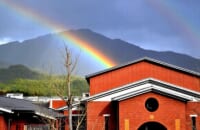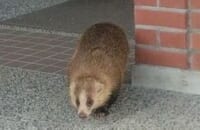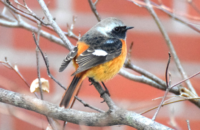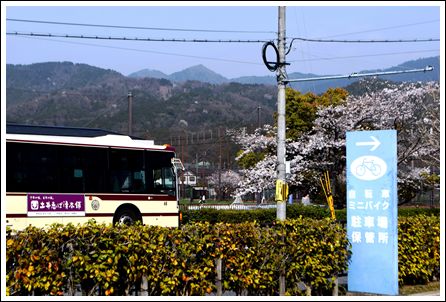
本校には、実は身近な「ふたこぶ」が2つあります。
みなさんが地下鉄「国際会館」駅から地上に上がった時に北方を眺めると、写真のような「ふたこぶの山」が見つかると思います。もうひとつは本校想遠館理科MSにいる「フタコブラクダ」です。
では、それぞれの「中身」は何でできているのでしょうか。
 フタコブラクダの「こぶ」はよく知られているように、脂肪(油成分)で満たされていて、栄養分を脂肪としてたくわえておくことでエサの少ない時に備えています。
フタコブラクダの「こぶ」はよく知られているように、脂肪(油成分)で満たされていて、栄養分を脂肪としてたくわえておくことでエサの少ない時に備えています。
一方、「ふたこぶの山」は、南側が横高山(767m)、北側が水井山(794m)です。この2つのこぶはどちらも今から2億年ほど前の中生代三畳紀~ジュラ紀の堆積岩でできています。しかし面白いのは北側の水井山の頂上付近には、マグマが固まった火成岩が入り込んでいることです。黒い鉱物が海苔のように目立つ特徴的な石です(写真下)。
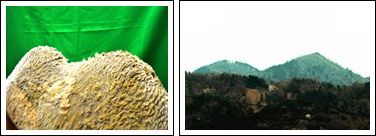
今回は、「ふたこぶ」という形に注目してみましたが、身の回りのさまざまな形には必ず何かの意味が隠されています。
「形」を入口にして科学的に深めてみても、なかなか楽しいものです。来る自由研究で試してみてはいかがですか?
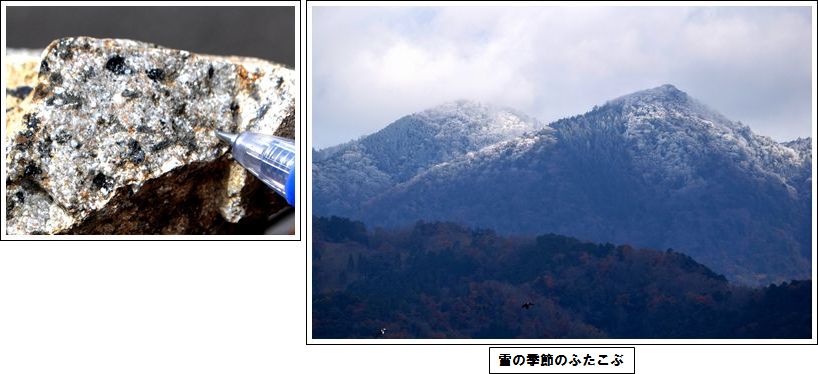
Our school has “two humps” close to it.
When you come up from the Kokusaikaikan subway station and look to the north, you can see the two hump-like mountains that you see in the photo. The other one is a Bactrian camel in our school. What do you think is inside each of these?
It is well known that the humps of a Bactrian camel contains fat, which is used for nutrition when the camels can’t find enough food.
As for the hump-like mountains, the southern one is Mt. Yokotaka (797m) and the northern on is Mt. Mizui (794m). Both of these humps were formed from sedimentary rock about 2 billion years ago between the Mesozoic Triassic and Jurassic periods. However, what is interesting is that near the peak of Mt Mizui we can find the igneous rock of hardened magma mixed in with the sedimentary rock. The black minerals that look like seaweed give the rocks outstanding characteristics.
This time we focused on the “two humps”, but you can discover all sorts of shapes with different meanings around yourself. It is interesting to think about shapes from a scientific point of view. Maybe you can do this when you start on your independent research this year.
《Words》ラクダ camel、こぶ hump フタコブラクダ Bactrian camel、横高山 Mt.Yokotaka、 栄養分 nutrition、中生代 Mesozoic 三畳紀 Triassic ジュラ紀 Jurassic、水井山 Mt.Mizui、堆積岩 sedimentary rock、脂肪 fat、火成岩 igneous rock
